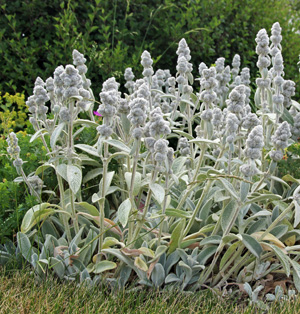
The soft, attractive foliage of lamb’s ear (Stachys byzantina) and its low, spreading habit make this a popular addition for the ornamental garden throughout much of the temperate world. There are several cultivars of this herbaceous perennial in the mint family (Lamiaceae) native to the Middle East that offer unique characteristics. ‘Cotton Boll’ is a cultivar with unusual flowers that resemble cottony balls along the stem.
The foliage of ‘Cotton Boll’ is very similar to the species, covered with dense hairs that create a silvery or bluish color over the gray-green leaves.

The woolly, lance-shaped leaves grow in dense rosettes 4-6 inches tall, with flower spikes up to 2 feet tall. Although evergreen in mild climates, the leaves will die back to the ground in harsh winters. The plants spread by creeping stems that root as they grow outward, forming a sprawling mat. It can be aggressive in rich soils but is relatively easy to pull out.
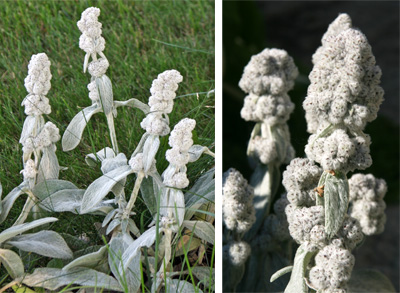
In early summer, long-lasting flower spikes grow above the foliage. These start out erect but often flop over as they grow taller and heavier. In the species, the small flowers are arranged in verticillasters (false whorls) and are mostly hidden by the calyces, but ‘Cotton Boll’ is sterile and the flowers have been modified into fuzzy clusters. Since the flowers are not showy, many people choose to remove the flowering stems which detract from the foliage as soon as they form. Deadheading also improves plant vigor and leaf regeneration. The flower stalks can be dried to use in arrangements.
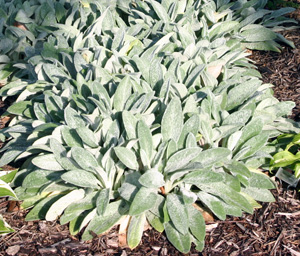
‘Cotton Boll’ is easy to grow in well-drained soils in full sun in cool climates and light shade in hot climates. In too much shade, the foliage doesn’t dry out quickly, and when it remains moist is susceptible to rot and leaf spots. ‘Cotton Boll’ performs better in humid areas than the species, although excessive moisture may result in crown meltout. Like the species, this cultivar is drought tolerant and hardy in zones 4-8. It is susceptible to winter injury, especially where soils remain wet, and is slower to regenerate than some other cultivars, such as ‘Big Ears’.
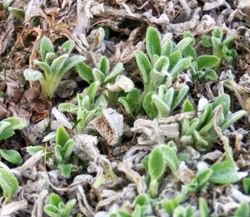
In a multi-year evaluation study by the Chicago Botanic Garden to ornamental traits, disease and pest resistance, cultural adaptability and winter hardiness, ‘Cotton Boll’ received a rating of 4 out of 5, as did the species and most other cultivars of S. byzantina.
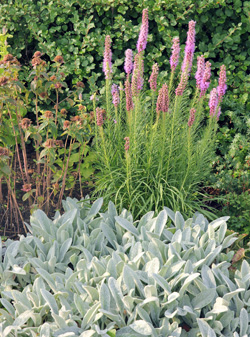
Like the species, ‘Cotton Boll’ has few pests and is not eaten by deer or rabbits. It will also grow near black walnut or other trees that produce juglone. Because it is sterile, it can only be asexually propagated. Divide established plants by digging up rooted sections.
Use ‘Cotton Boll’ lamb’s ear in masses as a ground cover or in smaller groups to provide contrast in color, texture, and height with other perennials. The velvety foliage combines well with both hot and cool colored blooms of other plants. It works well planted around roses and as an edging for borders or to soften the edge of a pathway. It is at home in a rock garden and can even be used in a large container.
– Susan Mahr, University of Wisconsin – Madison





 Aster, Symphyotrichum spp.
Aster, Symphyotrichum spp. Fascinating Fasciation
Fascinating Fasciation Alternatives to Lawn: Groundcovers
Alternatives to Lawn: Groundcovers Marigolds
Marigolds


